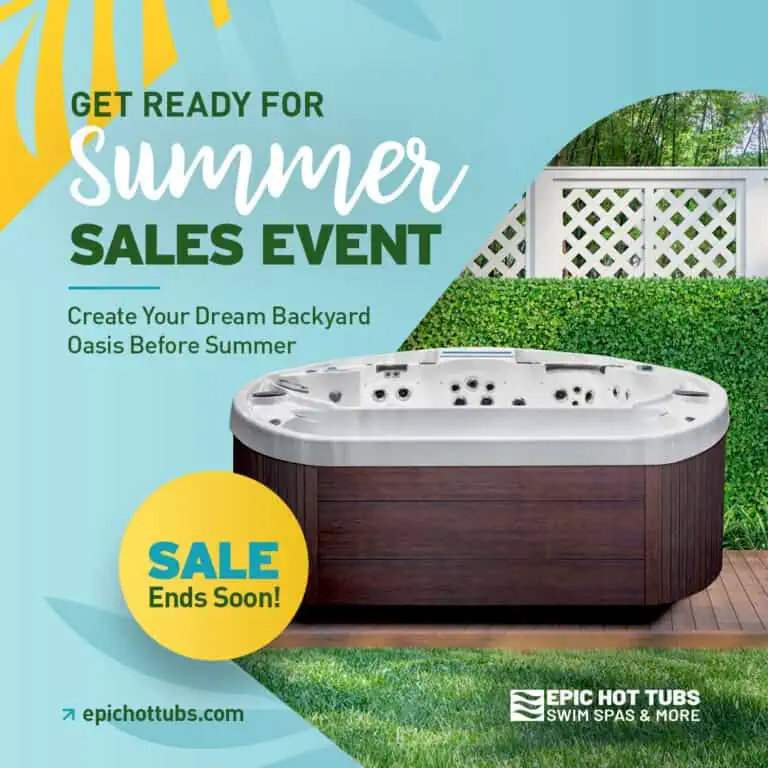Our experts share the top swim spa brands in the USA to help you decide…
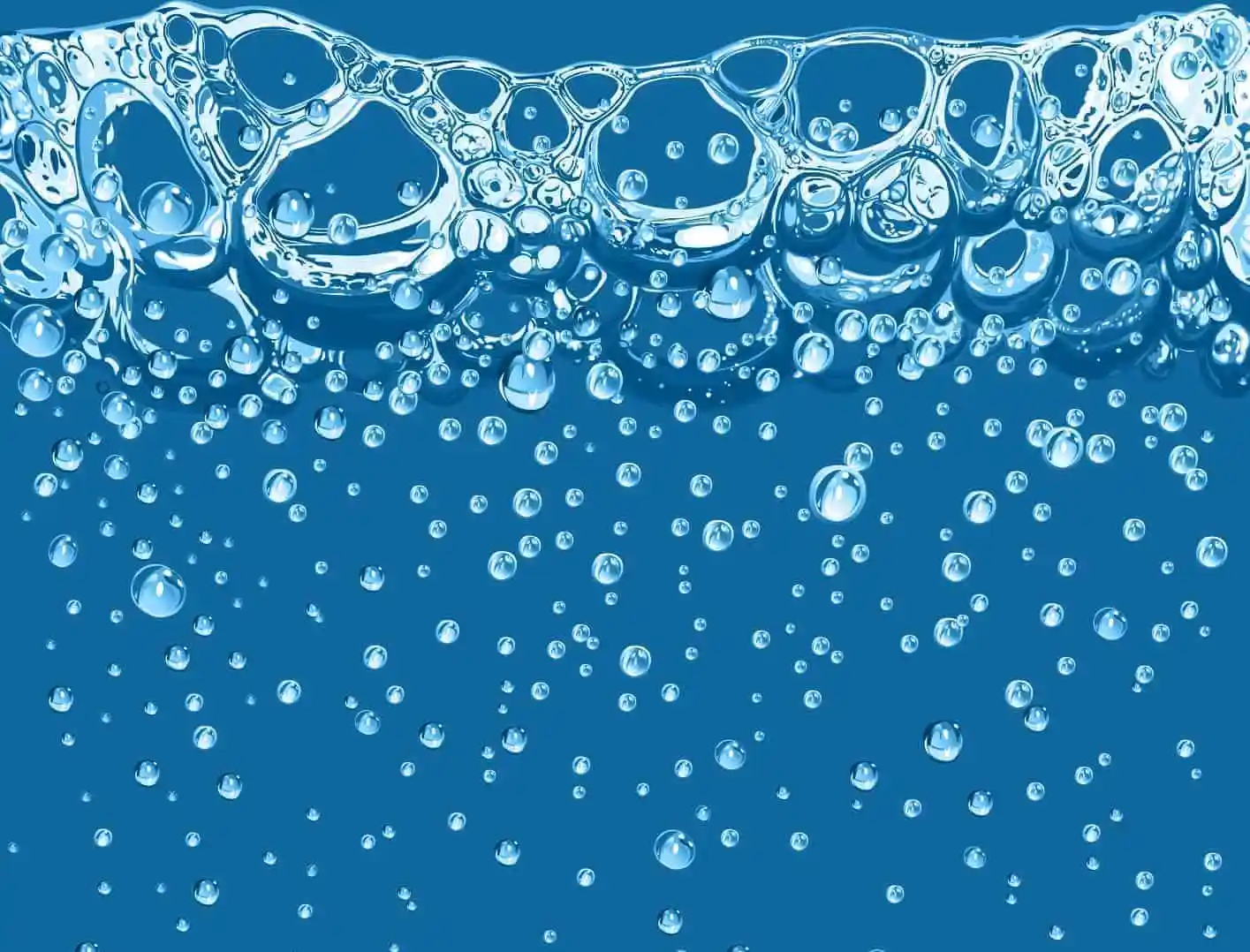
Swim Spa Maintenance – Essential Costs and Efforts to Consider
Read this guide to discover how to maintain your swim spa, the maintenance schedule to keep things simple, and how much it will cost.
What does it take for swim spa owners to keep their water sparkling clean and make every swim a great experience? It takes far less effort than you might think and doesn’t need a lot of money, either. In this article, we’ll break it down for you and give you a simple plan for how to maintain your swim spa without too much time or money.
Swim Spa Maintenance Summary
- Change the Water: Regular swim spa users, 3-4 times per week, should change the water every six months. More frequent swimmers could cut this down to once every 3-4 months.
- Check Water Level: A swim spa circulates a lot of water. If the system doesn’t have enough water, the pump could be damaged. Set the minimum water level and don’t go below it.
- Cover It: When not in use, covering your swim spa helps maintain water temperature, reduces evaporation, and keeps out debris, making your spa ready at any time.
- Pick a Good Temperature: Your spa isn’t meant to be a hot tub. Pick a comfortable temperature that won’t strain the heater too much.
- Clean the Filters: Regular filter maintenance is key to clear, clean water. Clean or replace your filters as recommended to keep your system running smoothly.
- Weekly Water Testing: Use an accurate test at least once per week to balance all the chemicals. Add any balancing chemicals to the spa as needed.
These aren’t super complex, but they are important. If you do these, your spa will have beautiful water and be a really enjoyable way to exercise and relax.
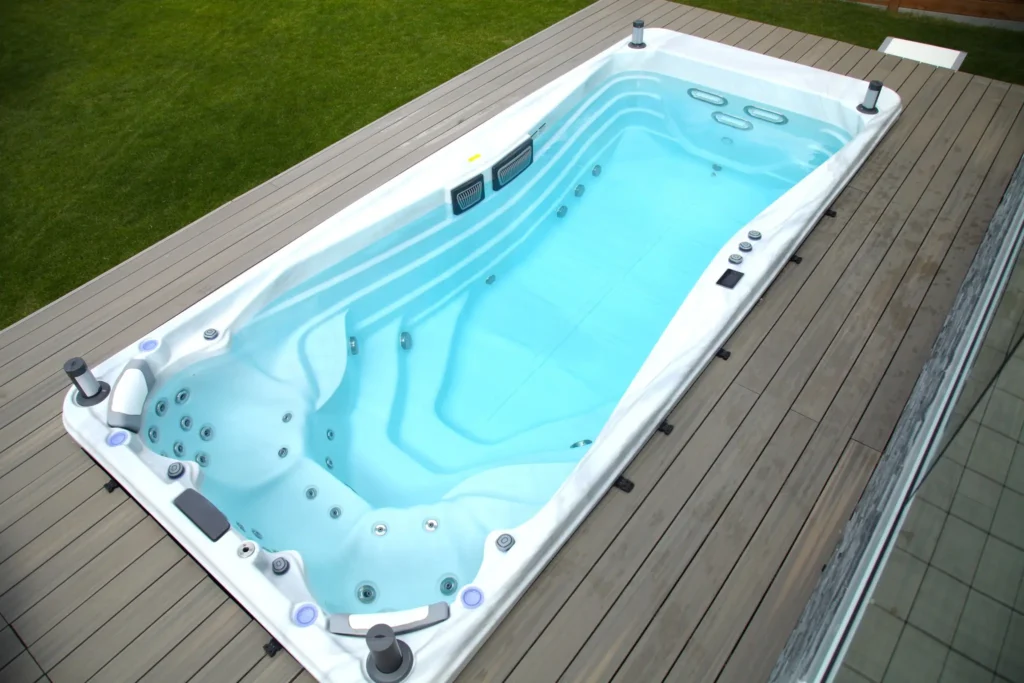
Introduction to Swim Spa Maintenance
We want to keep things nice and simple. So let’s take a look at spa maintenance tasks based on how often you should do them. This will give you a great picture of just how simple swim spa maintenance really is.
Daily Maintenance or Every Use
| Activity | Cost |
| Look over the cover for any damage or bad seal around the edges. | Free |
| Check the water level to ensure it is above the minimum amount. Add water as needed. | Free |
| Make a quick visual check for leaks, cracks, or damage to swim spa, cabinet, or installation | Free |
Weekly Swim Spa Maintenance
| Activity | Cost |
| Test the water for chemical levels. You should testing for pH and chlorine or bromine levels. | $10 or less |
| Add chemicals to increase or decrease chlorine levels and pH as needed. | $5-$10 per week |
| Remove and rinse your filter. It doesn’t need to be changed every week, just rinsed off. | Free |
Monthly Swim Spa Maintenance
| Activity | Cost |
| Completely clean your filters with filter cleaner. | $30 for eight cleanings |
| Vacuum the swim spa floor if necessary. | Free |
| Wipe down all the swim spa surfaces. This could be done more frequently if the swim spa is used really often. | Free |
Semi-annual or Annual Swim Spa Maintenance
| Activity | Cost |
| Replace your filters completely. | $50-$100 |
| Drain and refill you spa completely. This removes any fine particles that make your water cloudy but don’t get caught by the filter. | Water costs |
| Check the electrical connections and system components like the pump and heater. It may be worth having an electrician or spa technician review them. | Free or cost of a service visit. |
Essential Tools for Swim Spa Maintenance
For efficient swim spa maintenance, certain tools are indispensable:
- A spa vacuum aids in removing debris from the swim spa floor, while shop towels are gentle on the acrylic shell, useful for wiping down surfaces and scum lines.
- Filter cleaning attachments for your hose simplify the task of keeping filters clear of debris, ensuring efficient filtration.
- A five-gallon bucket becomes essential for soaking filters or even as a makeshift seat during maintenance tasks.
- Cover treatment, such as using a marine-grade cleaner, extends the life and appearance of your swim spa cover, ensuring it continues to function effectively.
These tasks only add up to a few minutes every week and a little longer every month. The annual service is a little more work, but not too much. You could even check with your spa dealer to sign up for an annual inspection and maintenance package. We know a swim spa increases home value, so these maintenance tasks just protect that investment.
Advanced Maintenance Techniques
Maintaining a swim spa involves more than just the basics. As you become more familiar with your spa’s operation, you’ll encounter situations that require a deeper understanding of maintenance techniques. This section explores advanced strategies for troubleshooting common issues and ensuring long-term care for your swim spa.
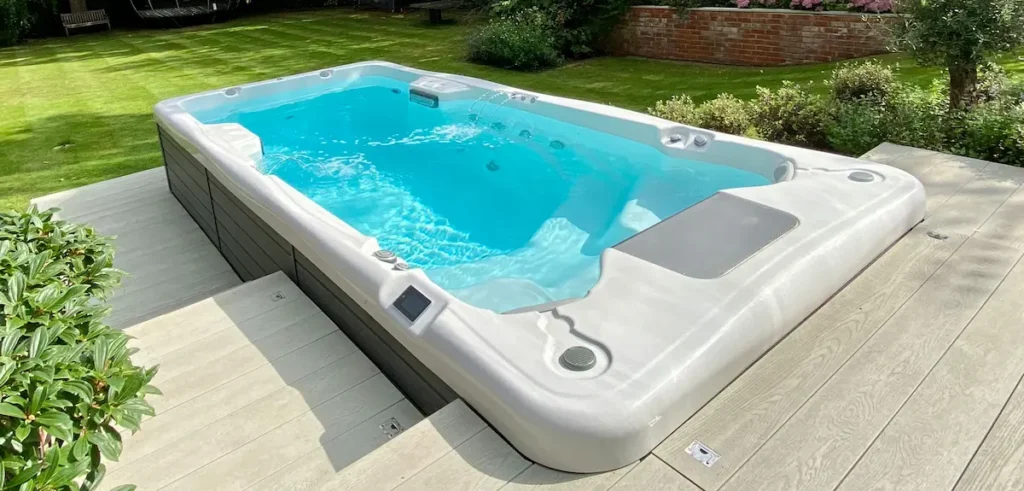
Troubleshooting Common Issues
There are a few issues that come up for our spa customers. We are always happy to offer spa water care help to keep your spa in top shape.
Cloudy Water:
- Cause: Often due to imbalanced chemicals, high contaminant levels, or poor filtration.
- Solution: Test and adjust water chemistry, shock the spa, and clean or replace the filter if necessary.
Algae Growth:
- Cause: Algae spores can enter your spa from the air or swimwear, thriving in warm water, especially if sanitizer levels are low.
- Solution: Adjust the pH and shock the spa with a high dose of sanitizer. Brush the spa surfaces and vacuum the debris. Consider an algaecide for persistent problems.
Filtration Problems:
- Cause: Clogged or worn-out filters can reduce water clarity and cleanliness.
- Solution: Clean the filters thoroughly or replace them if they are beyond their service life. Ensure the pump and jets are operating correctly to aid in water circulation.
Long-Term Swim Spa Care
Regular maintenance is important for keeping spa water clean and enjoyable. You can also lower your running costs with regular maintenance. But there are some things you might consider for long-term maintenance. Here are the most common long-term maintenance items, some of which might require a little professional help.
Periodic Professional Inspections
Even with diligent maintenance, it’s beneficial to have a professional inspect your swim spa annually. They can identify potential issues with electrical components, heating systems, and structural integrity that might not be apparent to the untrained eye.
Part Replacements
Components such as pumps, heaters, and control systems may eventually wear out. Keeping an eye on their performance and replacing parts before they fail can prevent downtime and more significant issues.
Cover Care
Protecting your swim spa with a high-quality cover not only keeps debris out but also improves energy efficiency by retaining heat. Clean and inspect your cover regularly for signs of wear and tear, and replace it if it becomes waterlogged or damaged. Read this article for our list of the best swim spa covers.
Long-Term Care and Seasonal Maintenance
Maintaining your swim spa over the long term and through the changing seasons requires a strategic approach to ensure its longevity and performance. This part of the guide focuses on the essential practices for seasonal care, addressing potential challenges, and tips for keeping your swim spa in optimal condition year-round.

Seasonal Adjustments for Your Swim Spa
Your spa has slightly different maintenance needs according to the seasons. Freezing in winter is an obvious one, but there are a few other things to keep an eye on.
Winterizing Your Swim Spa: In colder climates, it’s crucial to prevent freezing damage. This may involve adjusting the water temperature, ensuring the spa’s heating system is operational, and possibly investing in an insulated cover. For swim spas not in use during winter, a proper winterization process, including draining and protecting the plumbing, is essential to prevent freezing damage.
Preparing for Summer: As temperatures rise, your swim spa may require more frequent chemical adjustments to combat algae growth and maintain clear, clean water. Increasing filtration cycles and ensuring your spa has adequate shade can also prevent overheating and reduce the workload on your spa’s cooling system.
Shoulder Seasons: Pollen in the spring and falling leaves in the autumn bring more contaminants to your spa. During these seasons, you may want to increase how often you rinse the filter and wipe down the surfaces.
Adapting to New Technologies
Stay informed about advancements in swim spa technology and maintenance. New filtration systems, eco-friendly chemicals, and smart monitoring systems can offer opportunities to reduce maintenance efforts, improve energy efficiency, and enhance the overall swim spa experience.
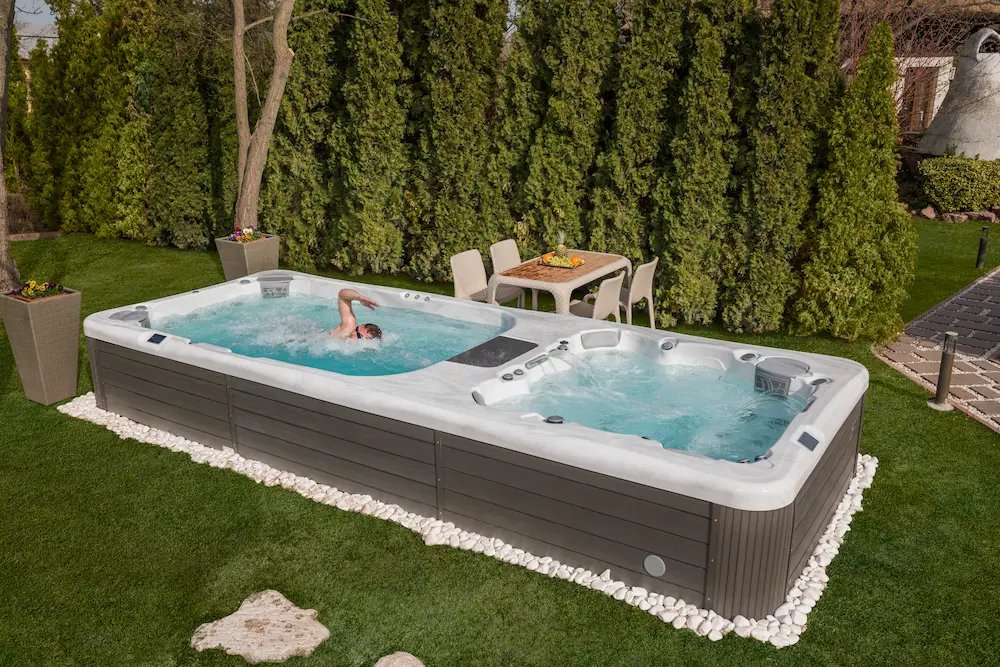
Is it Expensive to Maintain a Swim Spa?
While the total expenditure can vary widely based on the swim spa’s model, swim spa dimensions, and usage frequency, maintenance expenses primarily encompass water and chemical costs.
Typically, owners might spend around $6 to $30 every three to six months on water consumption, with an additional $50 to $70 per month for essential chemicals to ensure the water remains clean and safe for use.
Keep in mind, these figures are estimates and actual costs may vary depending on specific maintenance practices and local prices for supplies. Maintenance costs should be considered alongside swim spa installation costs to give you a full picture of the cost of owning a spa.
Frequently Asked Questions
How often should I change the water in my swim spa?
The frequency of water changes depends on usage but generally every 4 to 6 months. If the spa is used heavily or if maintaining water balance becomes challenging, you may need to change the water more frequently.
Can I use regular household products for cleaning my swim spa?
It’s best to avoid household cleaners as they may contain substances that could unbalance the water chemistry or damage the spa’s surfaces. Use cleaners specifically designed for swim spas to ensure compatibility and safety.
What should I do if I notice a leak in my swim spa?
First, try to identify the source of the leak. Small leaks around fittings or seals may be repairable with sealant products. For more significant leaks or if you can’t locate the source, it’s advisable to contact a professional for repairs.
How can I reduce foam formation in my swim spa?
Foam is often caused by body oils, lotions, and detergents. To reduce foam, shower before using the spa, use anti-foam products designed for swim spas, and ensure your water chemistry is balanced. Regularly cleaning the filter can also help.
Is it necessary to hire a professional for swim spa maintenance?
While many maintenance tasks can be performed by the owner, hiring a professional for an annual inspection or for addressing complex issues can be beneficial. Professionals can provide expert care and prevent potential problems.
How can I make my swim spa more energy-efficient?
To improve energy efficiency, use a quality insulated cover, maintain optimal water chemistry to reduce the need for heating adjustments, and ensure the filtration system is clean for efficient operation. Consider using a timer to control heating periods.
Wrap Up: Embracing Continuous Improvement
Enjoying the very best swim spa water quality requires just a few minutes every week and a few dollars a day. Just staying on top of these practices will give you chemically balanced water that is a real pleasure to swim and relax in. If you want help with swim spa water care, our customer service team at Epic Hot Tubs can answer any questions and give advice on the best techniques and products to use to address any water quality issues you are having. Give our friendly team a call today.

Ready to purchase a swim spa in NC?
Call us at 888-884-3742 or fill out the form below to get in touch with a member or our team.
Manny Brambila
Manny has been in the Pool & Spa industry for over 15 years and is considered a pool, swim spa, & hot tub expert. He has been a Certified Pool & Spa Operator (CPO) since 2009 and worked 15 years in aquatic training and development for the largest pool chemical and customer care company. He also has been an outside consultant for the Pool and Spa industry in Chicago, New York and Los Angeles since 2018. In the past few years Manny has become Director of Operations for Epic Hot Tubs with a priority of providing customers with the most reliable information and best service possible.


